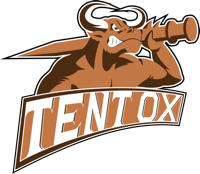Payroll: Personalized and Quantified
 by: Gary Stansberry
by: Gary Stansberry
Those who heard me speak in 2016 at MATRA, or who or have read one of my articles, are probably familiar with the following: Payroll is the largest cash expense for all rental companies. That’s the primary reason the average cash flow/EBITDA margin of tent and event rental companies’ falls below industry standards. It is a direct result of payroll expense being too high. Accordingly, payroll is the most important expense to control.
So, how do you gain better control over payroll? Payroll and related expenses for most well-run special event rental companies typically range between 40% to 45% of total revenue. If you’re not at this level, you can do something about it. Here are some steps you can take to make your payroll work better for your business:
Start by determining Fully Burdened Payroll. It is easily quantifiable and easily trackable. Fully burdened payroll is made up of base pay (salary or hourly), fair market owner’s/officer’s pay, overtime, commissions paid to employees, payroll taxes, payroll processing fees, contract labor, employee health insurance, profit sharing contributions/401k and other employee benefit expense.
Track expenses and revenue together. Management should track payroll expenses every pay period and match them to with the revenue generated (billed) during the same period. Tracking them together will give you a feel for the peaks and valleys (seasonality) of both revenues and expenses.
Sounds easy, right? But payroll is not just numbers. It’s really people. People with names, with families and personalities. Payroll also goes to the core of your company, your company’s culture, methods and procedures, borrowing from the 1990’s song “This is How We Do It.”
Make a culture adjustment. Arguably, culture is one of the hardest things to change within a company. People and methods get “locked in”. A 40′ x 60′ tent requires this crew, this number of employees, this number of hours. Multiply this by hundreds or thousands of jobs, actions and hours, and you can see how small adjustments can make or break your year. What if one change, one less employee per job could result in a 5%, 10% positive change in your bottom line, your cash flow? Look at professional golf. The difference between top money winners and the rest of the pack is often just one or two shots per round. In the same way, one or two hours saved per job can add up over the course of the season.
Use the Winter lull to reset. Most special event rental companies have a lull in the winter months. This is usually a time for maintenance and re-grouping from last busy season before the next busy season starts. Perhaps this year, in addition to those physical maintenance issues, you can spend time with your key supervisors and “deconstruct” some of your ingrained culture and conceived notions. Look for ways, through better labor management (or a tool such as the Tent Ox System), to reduce crew size. Ask what can you do together to reduce the number of man hours attached to each job?
Invest in your business like a capitalist. Ultimately, as a business owner you are a capitalist. You have a large investment, and it’s likely that the bulk (if not all) of your net worth is at risk. You deserve a fair return based on that investment and risk. The best way to insure stable, long-term employment for your employees is to have a healthy, profitable business that generates market returns. Market returns means more capital, more growth, more employment for your business. If you are getting substandard returns, your business will eventually recede, possibly even fail.
Measure your payroll, manage your business, take time in the offseason to examine your “This is How We Do It.” Proper management of payroll is a benefit to all, not just the business owner.
Gary Stansberry is the President of The Stansberry Firm, LLC and specializes in business sales, fair market business valuations and operational consulting, including positioning businesses to increase their value. More information on the company click here. Gary can be reached at (210) 797-7368 or by email at gary@thestansberryfirm.com
